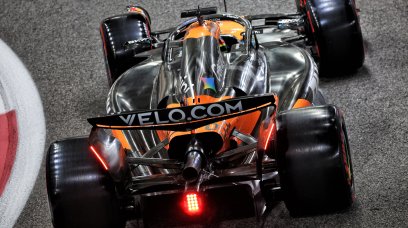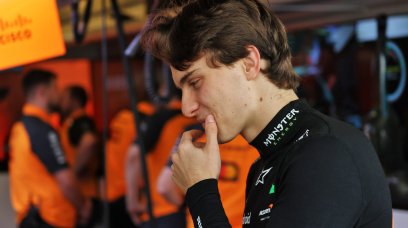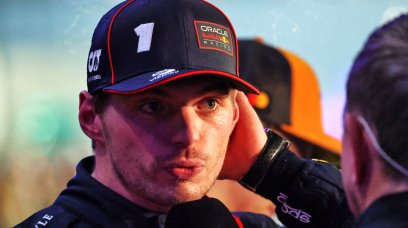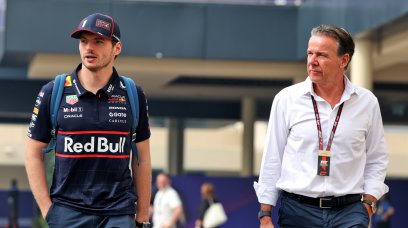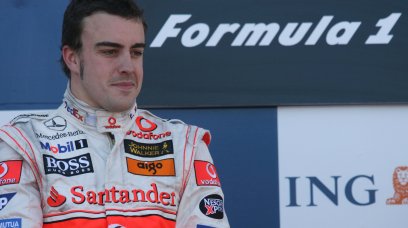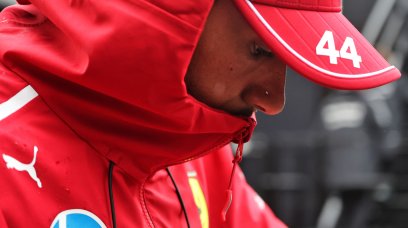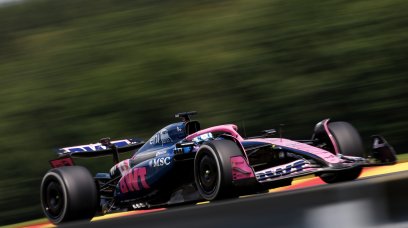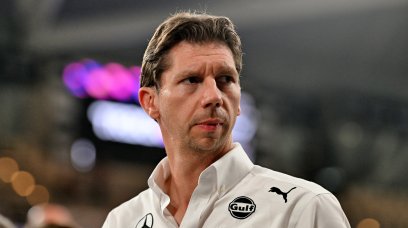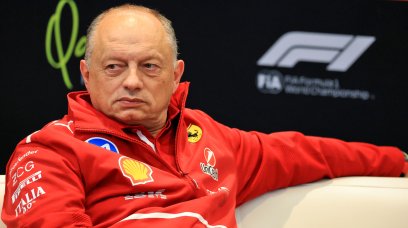A new era of Formula 1 awaits in 2022, with huge revolution in the rulebook that sees the sport go through the biggest single-year changes since the 2008/2009 season. The new-and-improved F1 will look very different, with the rules for car design being torn up and starting anew. Alongside that, there's also plenty of non-technical changes which aim to make F1 more unpredictable and more exciting. Let's get up to speed on everything that's changing for F1 2022...
F1's new cars should improve the racing
As analysed previously , by far and away the biggest of the changes being made for 2022 is the major technical rules overhaul, meaning there's almost no carry-over of 2021 technology into the new season. Years of research have gone into crafting the new designs, which fundamentally alter how the cars generate and use downforce. While cars from 2021 and prior focused primarily on over-car airflow downforce generation, essentially pushing the cars into the ground, 2022's rules switch focus to generating grip via under-car airflow. This has the effect of sucking the car down onto the tarmac and significantly reducing the amount of disturbed air thrown up in a car's wake. As a result, the downforce decrease for cars following closely behind should be reduced considerably. The technical rules governing how the cars are designed have been written with the intent of simplification in every area, including a very different looking rear wing, as well as introducing wheel covers for the first time since 2008. DRS (Drag Reduction System) will remain in place, but there is the possibility it may eventually be designed out of the cars in future seasons if the new regulations work as planned.
F1 introduces an 'engine freeze'
The engine formula hasn't changed for 2022, with the teams still using a 1.6-litre turbocharged V6 with hybrid ancillaries. What will change for this season is the introduction of an 'engine freeze', which will come into effect from 1 March 2022. After this date, research and development on the ICE (Internal Combustion Engine) will effectively stop entirely until 2025 or 2026 (the exact date is yet to be confirmed). The hybrid ancillaries are permitted one upgrade over the course of 2022, with the freeze for these parts coming into effect on 1 September 2022. The freeze is aimed at stopping any performance-related development. However, some leniency will be given – specifically for those who are struggling with reliability through a design flaw. Manufacturers will be permitted to make changes, provided they meet very strict criteria. Having submitted an application to make a change, which is only permitted under the remits of reliability, safety or cost saving, the reasons for the request must be explained in detail. The FIA will then consult with the other engine manufacturers to evaluate whether such a request is reasonable and based on an honest appraisal of the issue. It is after this process is carried out that the FIA will decide whether permission will be given to make the necessary change. The aim of this is to significantly reduce costs for the next couple of years, in line with the tightening budget cap (more on that in a moment!).
New fuel comes into play
While the engine formula hasn't changed, the architecture of the engines still requires significant development before the freeze kicks in. For 2022, F1 moves to a new 'E10' fuel – this referring to the ethanol content of the fuel. Last year, the ethanol content was 5.75 per cent. This year, it must be 10 per cent. This results in a huge engineering challenge for the manufacturers and the fuel suppliers as they work to make up for the horsepower loss of such a significant change. ExxonMobil, fuel and lubricant supplier to Red Bull, have explained the challenges of the processes ahead of the engine freeze kicking in, as the freeze also applies to all fluids used in the engines.
A tightening budget cap
F1 introduced a budget cap for the 2021 season, with teams restricted to a maximum amount of expenditure over the course of the season. For the first year of the cap, the ceiling was set at $145 million dollars – a generous level that meant plenty of leeway above the budgets of some of the smaller teams, while forcing bigger teams to more carefully plan out their spending. In some cases, this had the unfortunate side effect of lay-offs as the bigger teams tried to figure out ways to reduce their expenditure. For 2022, the budget is tightened by a further $5 million, bringing it down to a total spend of $140 million. For now, the budget cap doesn't include driver salaries, the salaries of the three highest-paid employees, or various asides such as a team's bonus structure for staff, operational running costs for employee comfort at the factory, and standard company departments such as HR, marketing and legal. Put simply, the budget cap is in place to restrict teams from spending their way towards more on-track performance, without them having the ability to tighten the purse strings in all the wrong ways.
Record number of F1 Grands Prix
F1 2022 is set to feature the busiest-ever calendar in the history of the sport. This year will see a record number of races held, starting with the Bahrain Grand Prix in March. Squeezing in 23 races in just eight months, the season ends in November with the Abu Dhabi Grand Prix. There's another new race joining the calendar this year, too. Miami will play host to its inaugural event, with the United States getting two races for 2022. Returning races, which missed two years due to the COVID-19 pandemic, include Australia, Canada, Singapore and Japan.
More pre-season test days
With the introduction of the new rules delayed, the 2021 season saw teams continue to use their 2020 cars for another year. As such, pre-season testing was cut to just three days. Having had eight days of pre-season testing up until 2019, it was a significant chop of season preparation time – time that has been largely restored for 2022. Given the huge rules shake-up for this year, the teams will be given a total of six pre-season test days. The first test takes place at the Circuit de Barcelona-Catalunya and is officially being called a 'pre-season session', i.e. a shakedown to allow teams to iron out any niggles ahead of the official test in Bahrain. The three days in Barcelona will be held from 23 to 25 February, with the three days at the Bahrain International Circuit being held from 10 to 12 March.
Sprint Qualifying races
The 2021 season saw the introduction of 'Sprint Qualifying', with three such events using the format as part of F1's experiment. Bumping traditional qualifying to Friday, Sprint Qualifying is exactly the same as a Grand Prix in almost every way. The difference is that it is held on Saturday, there is no mandatory pit-stop, it is 30 minutes long and the finishing order sets the grid for the main Grand Prix. Despite receiving a lukewarm reception from fans, F1 has signalled intent to host six such races in 2022. However, at the time of publishing, it is not confirmed that these Sprint Qualifying format events will actually go ahead – this being due to arguments amongst the teams with the FIA about raising the budget cap in order to accomodate the additional risks and costs of the races.
Most read
